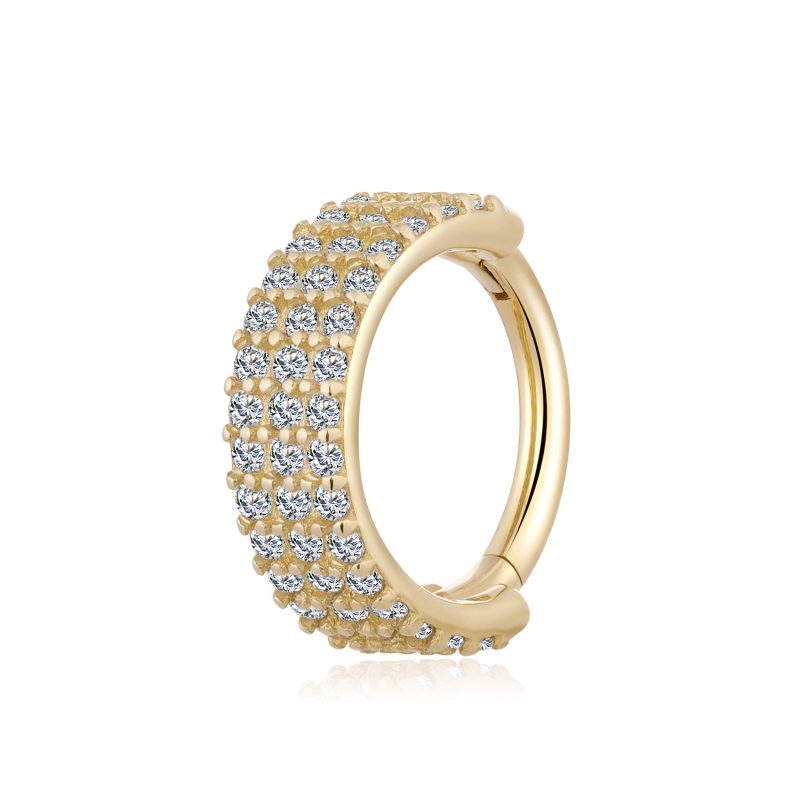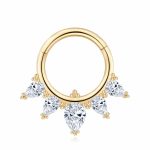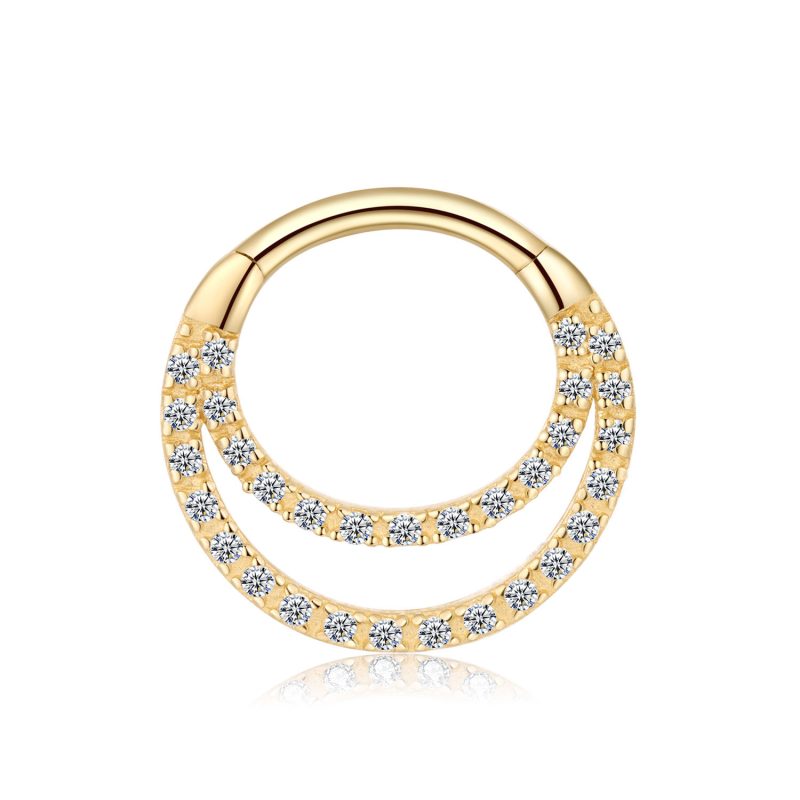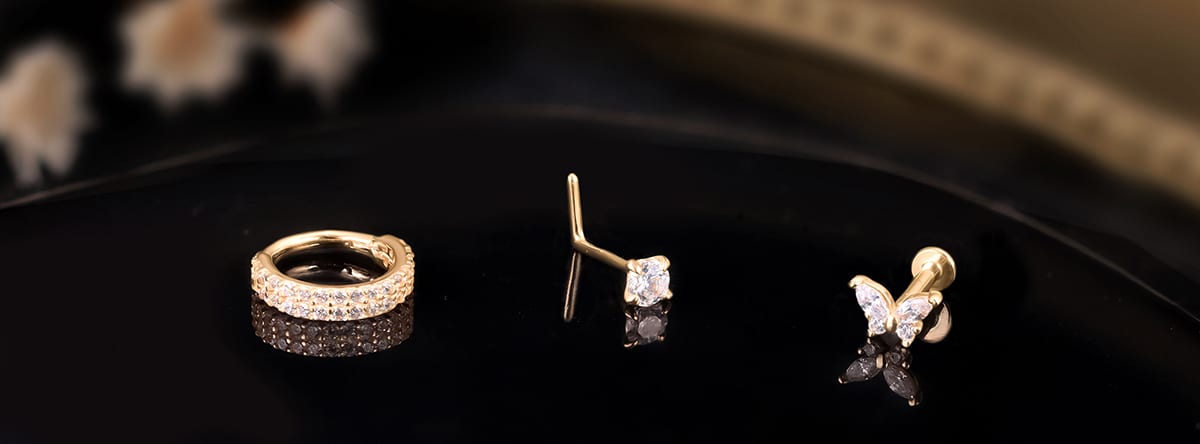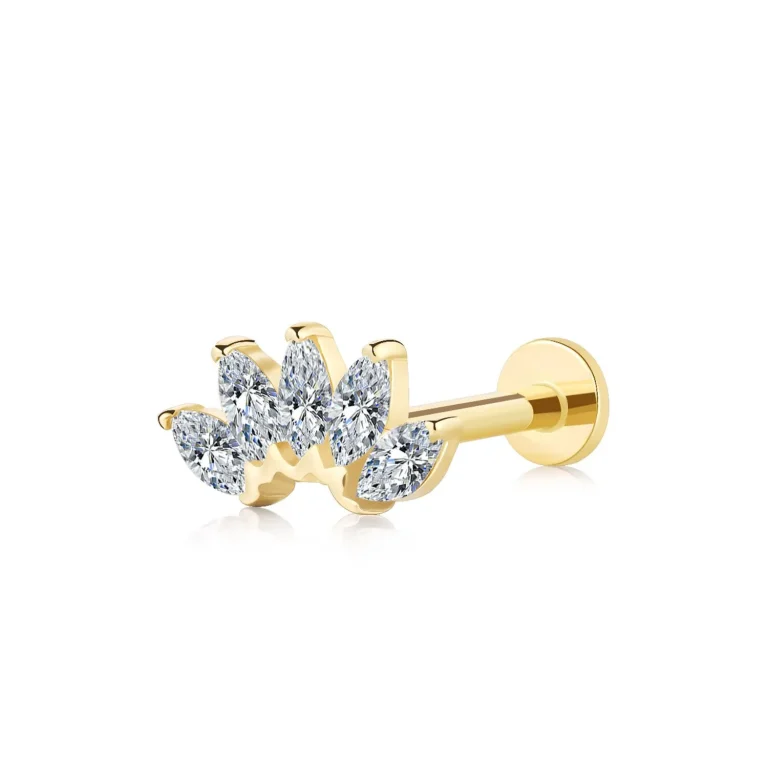As we discuss the material standard of body piercing jewelry factories, there are a few important points to keep in mind to make sure that we are getting quality products. These material standards will allow body piercing jewelry factories to manufacture products that are safe, reliable and attractive according to the specifications of the consumer as well as according to regulatory requirements.
Key Material Requirements for Body Piercing Jewelry
Biocompatibility Standards for Metals
And when it comes to body piercings jewelry, biocompatibility is an absolute. The materials that are used have to be hypoallergenic to reduce the chances of reactions such as skin irritation or infections. Nickel, which is a very common allergen, is rarely found in biocompatible metals!
For example, 14K solid gold jewelry is commonly sought after because it’ll never irritate the skin, and it’s also sturdy. 14 K: 58.5% pure gold, the rest is mainly copper and silver whose contents provide relatively good hardness, and gold’s luster and color are still retained.
Corrosion Resistance and Durability in Jewelry Materials
As mentioned above, body jewelry is subjected to countless elements like water, sweat, and bodily fluids. This explains why the corrosion resistance is a key property of the materials involved.
Materials such as titanium and surgical stainless steel show excellent rust- and tarnish resistance, so you can count on them lasting even through tough conditions. These metals are so durable that they still last ages while preserving their structural integrity, which is great if you will be wearing them on a daily basis.
Certification and Compliance with Industry Standards
It must adhere to standards such as ASTM or ISO certifications to assure safe and quality body piercing jewelry. To meet these standards, the materials must be safe for extended exposure to human tissue.
Commonly Used Metals in Body Piercing Jewelry Production
Titanium and Its Applications in Body Piercing Jewelry
Lightweight with a high strength-to-weight ratio, titanium leads the list for best body piercing jewelry. Highly biocompatible for people with sensitive skin or allergies. Thanks to titanium’s corrosion-resistant character, it never will be affected by environments.
Surgical Stainless Steel Properties for Safe Use
Another common material that is often used in making body-piercing jewelry is surgical stainless steel. Remember the low cost and strength of this metal make it a safe choice amidst unsure consumers who are not ready to spend more money in better alternatives premium such as gold and titanium.
It does not stick to the open skin and as a result, is less irritating during healing cycles due to its smooth surface. It has a very smooth surface, so it is less likely to irritate during a healing period.
Niobium as a Versatile Option
Niobium is a unique material and a favorite body-piercing jewelry option. It is capable of producing a range of colors by anodizing without losing its structural integrity or biocompatibility. That makes it a pick for those who want to stay safe while rocking their style.
If you are looking for something luxurious but safe, this certainly works and is a beautiful piece. KCSV3054G, a nipple ring with a luxurious design in a threadless 14k solid gold setting with CTW brilliantly cut cubic zirconia, light reflected from any direction via 14k solid gold apex crystal within the crystal.

Advanced Manufacturing Processes for High-Quality Jewelry
Precision Casting Techniques for Consistency
Precision casting is fundamental to consistent quality in the body-piercing jewelry world. It enables the design of complex parts with excellent precision, which makes each part be manufactured according to corresponding specs. This is typically done in precision casting, where a wax mold is used that is then filled with metal. This yields an immaculate copy of the original design.
Polishing and Finishing Methods to Enhance Safety
The polishing and finishing steps in manufacturing body jewelry are crucial. These processes take away irregularities on the surface, providing a finishing touch that reduces friction against the skin when worn. Days of polishing (for example, mechanical buffing and electro-polishing) are used to ensure every detail gets polished.
In particular, it improves corrosion resistance because it removes microscopic surface defects. This is important for metals utilized in body jewelry such as surgical stainless steel and titanium, which are alike durable and biocompatible.
Quality Control Measures in Jewelry Factories
Any high-quality body piercing jewelry that is manufactured, must have strict quality control. Factories will usually perform strict tests to ensure that each component aligns with industry standards for performance and safety. This includes checking the composition of the material to make sure it complies with ASTM or ISO certifications.
Additional inspection methods, such as visual inspection, and functional test methods ensure that all products are free from defects before reaching consumers.
Recommendations for Material Selection Based on GPF Products
Highlighting GPF’s Titanium-Based Jewelry Options
Due to its lightweight properties and high strength-to-weight ratio, titanium is an amazing body piercing jewelry. Well, it is perfect for people who have allergies or sensitive skin due to its hypoallergenic properties. Titanium-based products provide numerous benefits for those looking for reliable options without sacrificing safety or style.
Stainless Steel Products Meeting Industry Standards
Surgical stainless steel is still one of the best-selling materials in the body piercing jewelry industry because it is inexpensive and durable. This metal has a smooth surface finish so it minimizes any irritation when dressing is required, and will not distort over time.
Custom Solutions Offered by GPF for Specific Needs
Custom offerings carry the advantage of fitting with distinct customer needs and matching individual preferences. It can be customized how these pieces are made, like patterns, or picking your metal, like 14K gold or niobium — there’s truly no limit to how we can personalize.
Consumers are opting for 14K solid gold piercing jewelry because solid gold is so much more durable and beautiful! These offerings are tailored for individuals who desire utility along with aesthetics.
For more information about GPF, please click here!
FAQs
Q1: Why titanium is the material of choice for body piercings?
A: Titanium is lightweight, very strong and hypoallergenic–perfect for those who suffer reactions to other metals.
Q2: Why is polishing important in body-piercing jewelry?
A: Polishing removes surface imperfections and enhances corrosion resistance, ensuring both safety and longevity.
Q3: Do you offer bespoke solutions for specific piercing requirements?
A: Custom solutions can be made out of 14K gold or niobium, and since we can control the design of custom solutions, they can also be tailored to an individual’s preferences.

